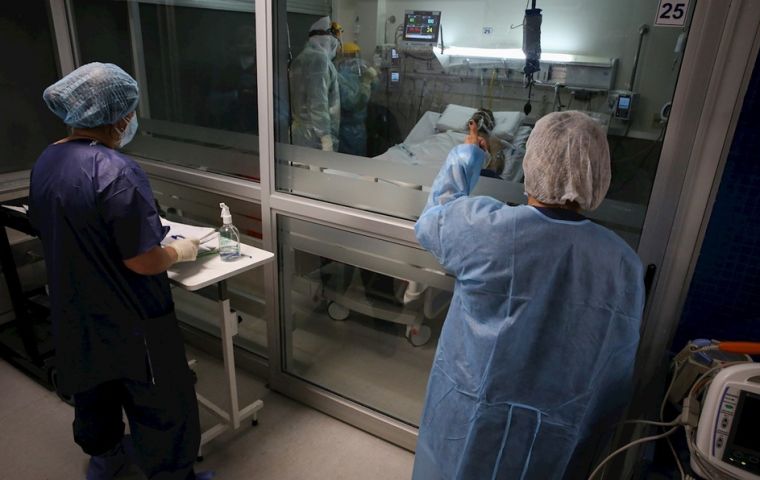MercoPress. South Atlantic News Agency
Case of covid-related “black fungus” concerns Uruguayan doctors
 Although rare, mucormycosis has been reported in patients with other comorbidities and is particularly lethal in those cases.
Although rare, mucormycosis has been reported in patients with other comorbidities and is particularly lethal in those cases. Uruguayan scientists have reported the appearance of a case of mucormycosis, or “black fungus”, a rare infection that began to be reported in India as a disease associated with the coronavirus pandemic.
Professor Henry Albornoz indicated that he was treating a man under 50 years of age and with diabetes, who about ten days after the infection with covid-19 began to present necrosis (tissue death) in the mucosa area and that, by means of a laboratory test, it was confirmed that he had also been infected with the “black fungus.”
Although mucormycosis is known by that name, the adjective does not refer to the color of the fungus but to what it causes, the death of body tissue. In India, where more than 26 million people who tested positive for SARS-CoV-2, in recent weeks, about 9,000 cases also suffered later from mucormycosis.
It is unknown if the reported case is the first in Uruguay because mucormycosis is not reported as an exclusive event. As Albornoz explained, “the important thing is not the identification of a case, but the warning that the immune wear caused by Covid-19 can leave fertile ground for other infections.”
Zygomycetes - the family of fungi that cause this infection known as mucormycosis - are abundant in the environment. They are the cause, for example, of black mold on bread, or that greenish coloration in cheeses that remained uncovered in the refrigerator for many days. But as infectologists say, for infection to occur in a human, the presence of the fungus alone is not enough: other conditions must concur
Mucormycosis, although rare, has been reported in patients with uncontrolled diabetes, in those who are immunosuppressed, who have undergone leukemia or a bone marrow transplant. The fungus finds a lesion in the tissues - that is why it sometimes invades the body of a burned person or a traffic accident - and begins to advance, killing the tissue.
“They are the most opportunistic fungi: they need prior damage to be able to grow,” explained infectologist Zaida Arteta, a Mycology leading experte in Uruguay. In the case of covid-19 patients “the lesions are usually in the paranasal sinuses, mucous membranes, lungs ...”.
Arteta also explained that India is the second most populated country in the world and cases there are seen on a large scale, but, in addition, it is a country with areas where a lot of dust is concentrated or there is high pollution and that makes these fungi more prevalent. In any case, the infections caused by this “black fungus” greatly increases mortality: between 50% and 80% in those who suffer from it.
This virulence means that, given the advance of the fungus, doctors must act quickly: an early diagnosis, surgery (the damaged part is removed, if feasible) and the use of fungicidal drugs (amphotericin B). Albornoz admitted that such a drug was available in Uruguay. But high mortality is not a matter of treatment alone, but “usually occurs in patients who are already vulnerable and greatly affected in their ability to recover.”
In the case of the Uruguayan patient, he had previous comorbidities, but his Covid-19 infection had not been serious and did not even require hospitalization. “But about ten days later the symptoms of the fungus infection began and now that is their main battle.”




Top Comments
Disclaimer & comment rulesCommenting for this story is now closed.
If you have a Facebook account, become a fan and comment on our Facebook Page!